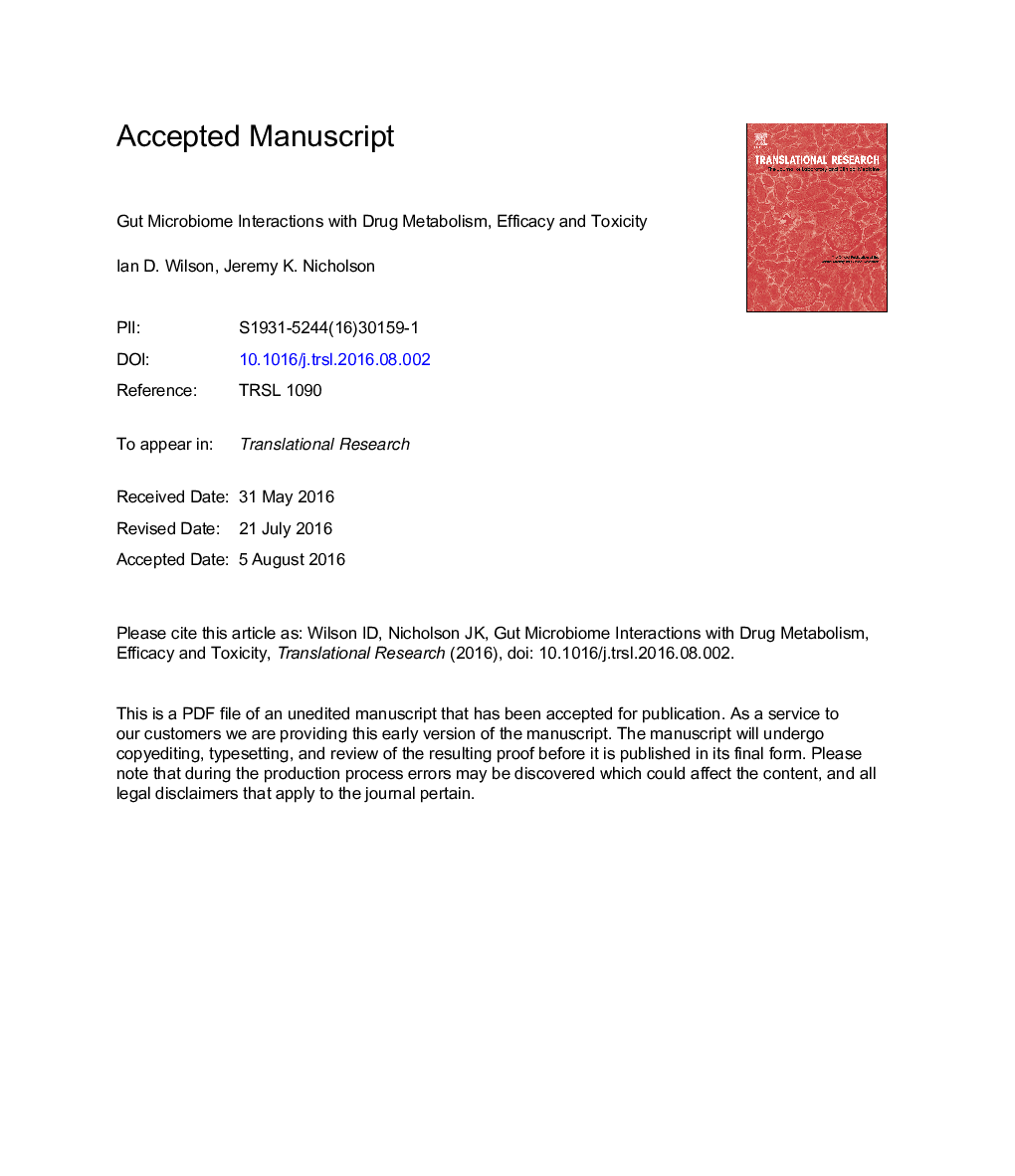| Article ID | Journal | Published Year | Pages | File Type |
|---|---|---|---|---|
| 5685083 | Translational Research | 2017 | 42 Pages |
Abstract
The gut microbiota has both direct and indirect effects on drug and xenobiotic metabolisms, and this can have consequences for both efficacy and toxicity. Indeed, microbiome-driven drug metabolism is essential for the activation of certain prodrugs, for example, azo drugs such as prontosil and neoprontosil resulting in the release of sulfanilamide. In addition to providing a major source of reductive metabolizing capability, the gut microbiota provides a suite of additional reactions including acetylation, deacylation, decarboxylation, dehydroxylation, demethylation, dehalogenation, and importantly, in the context of certain types of drug-related toxicity, conjugates hydrolysis reactions. In addition to direct effects, the gut microbiota can affect drug metabolism and toxicity indirectly via, for example, the modulation of host drug metabolism and disposition and competition of bacterial-derived metabolites for xenobiotic metabolism pathways. Also, of course, the therapeutic drugs themselves can have effects, both intended and unwanted, which can impact the health and composition of the gut microbiota with unforeseen consequences.
Keywords
ADMETPXRgastro intestinalGSTsDPDMrp2UDPCytochromes P450NRF-2Cyp450sRMSPPIabsorption, distribution, metabolism, excretion, toxicityGSTUGTFDANSAIDSmRNASPFCgrGPx2AHR5-FUAUCcMOATDNALC-MS/MSNATsOTUUDP-glucuronosyltransferaseuridine diphosphatedeoxyribonucleic acidGerm freeNon-steroidal anti-inflammatory drugsdihydropyrimidine dehydrogenasemessenger ribonucleic acidFood and Drug AdministrationSulphotransferasesLiquid chromatography-tandem mass spectrometrynuclear factor erythroid 2-related factor5-fluorouracilCARReactive metabolitesarea under the curveProton pump inhibitorsEpoxide hydrolasesoperational taxonomic unitspecific pathogen freemultidrug resistance-associated protein 2multidrug resistance protein 1SULTsglutathione S-transferaseGlutathione transferasesglutathione peroxidasearyl hydrocarbon receptorconstitutive androstane receptor
Related Topics
Health Sciences
Medicine and Dentistry
Medicine and Dentistry (General)
Authors
Ian D. Wilson, Jeremy K. Nicholson,
